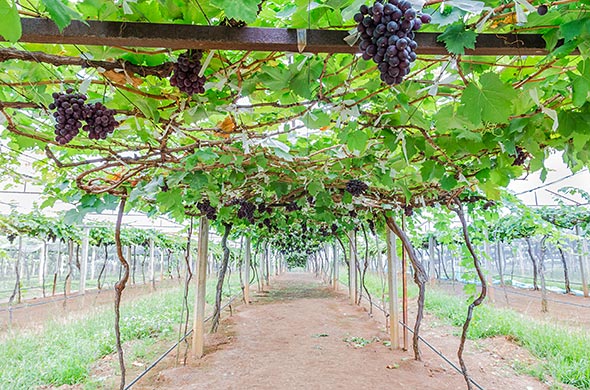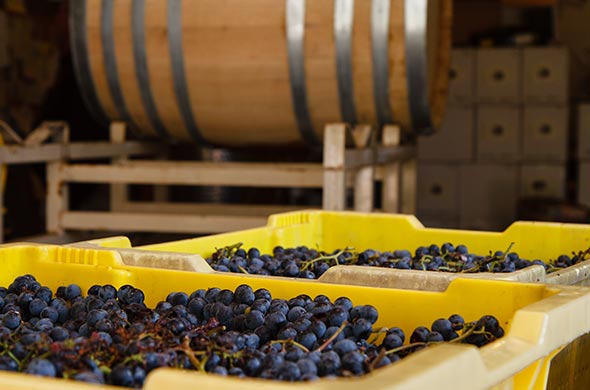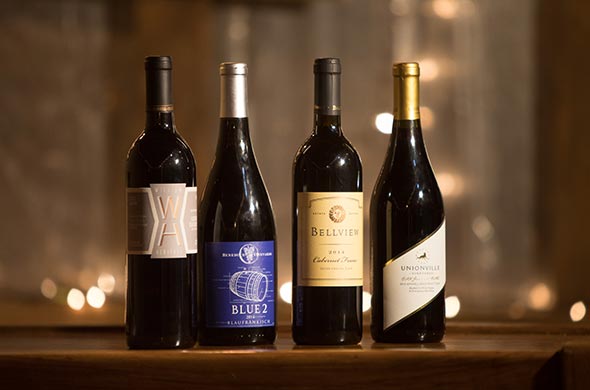
Providing Technical Assistance to New Jersey Wineries: Achieving Pollution Prevention through Energy Efficiency and Discharge Reduction from Winery Operations
Rutgers University in collaboration with the US Environmental Protection Agency (USEPA), has been working with New Jersey wineries to increase their energy and water efficiency within a sustainability framework to improve their economic feasibility, environmental acceptability, and social impacts. Our project is supported by USEPA’s Pollution Prevention Program (EPA-HQ-OPPT-2020-001).
Project Participants
Rutgers University
- Serpil Guran
- Christopher Obropta
- Daniel Ward
- Matthew Leconey
- David Specca
NJ Department of Environmental Protection
- Ky Asral
History
The New Jersey wine making industry has a history of 200 years since London’s Royal Society of the Arts recognized two New Jersey vintners for their bottled quality wine derived from colonial agriculture. Today, New Jersey wineries continue the tradition of producing high quality wines, which compete with high quality wines worldwide.
According to the NJ Division of Alcoholic Beverage Control lists, there are 54 licensed wineries in New Jersey including the three categories of licenses: Farm, Plenary and Blending Wineries
These wineries vary in size and capacity. New Jersey wineries produce approximately 700,000 gallons of wine in a year. In addition, winery and related industries account for approximately 2,000 jobs and contribute approximately $17 million dollars yearly in tax to the New Jersey economy.
Wine producers in New Jersey are sensitive to environmental concerns and this industry is nimble and willing to adopt better technologies. Therefore, the wine industry is an excellent candidate for adoption of cleaner fuels, energy and water efficient technologies.
Modern winemaking is an energy and water intensive process, and consumption of these resources occurs at several production stages based on the type of wine and winery size and capacity. Wineries can benefit greatly from conservation strategies to achieve more environmentally responsible operations and an improved bottom line.
Energy efficiency opportunities can be implemented with retrofits and expansion, as well as new construction projects. In addition to technical assessment solutions, winery operators and workers may benefit from behavioral change to achieve quick results in energy efficiency.
Winery Types by Category
Wineries are categorized by refrigeration capacity as follows:
- Small/Medium: refrigeration system less than 100 tons
- Large: refrigeration system equal to or greater than 100 tons
- Very Large: refrigeration system greater than 2,500 tons
Importance of Baseline Analysis, Benchmarking for Goal Setting and Decision Making
- Used to improve knowledge of the environmental performance of industrial facilities and buildings and to assess energy and water management practices
- Provides a fair way to compare the energy intensity and water consumption profiles of processing plants, while accounting for structural differences (e.g., the mix of products produced, and climate conditions) between different facilities
- Tool for understanding energy and water consumption patterns in an industrial facility and for designing policies to improve facility operations
- Can stimulate innovative approaches to improve energy and water management in industrial facilities and organizations
As in any business, decision-making should be based on real performance data. Before initiating energy and water related improvements, it is essential to perform a baseline analysis to develop benchmarks to be able compare the changes. Therefore, we underline the importance of the facility specific analysis.
Winery Sustainability I: Energy Efficiency in Wineries Video
Winery Sustainability II: Improving Energy Efficiency in Winemaking Video
Winery Sustainability III: Building Efficiency in Wineries Video
Winery Sustainability IV: Water Efficiency and Waste Management in Wineries Video


